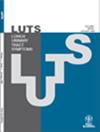Predictors of postoperative storage symptoms in male patients with lower urinary tract symptoms: A retrospective analysis of prostate surgery for benign prostatic enlargement
Abstract
Objectives
This study investigated the effects of prostate surgery on storage symptoms in male patients with lower urinary tract symptoms (LUTS) from benign prostatic enlargement (BPE). This study aimed to identify patient characteristics associated with improved, unchanged, and deteriorated post-surgical storage symptoms and to identify the risk factors for non-improvement or deterioration.
Methods
A retrospective analysis of 586 prostate surgeries performed between 2016 and 2022 at Yokosuka Kyosai Hospital was conducted on patients with LUTS and at least one storage symptom preoperatively. Patients with active urinary tract infection, prostate/bladder cancer, urethral strictures, or dementia were excluded. The study enrolled 230 patients and assessed storage symptoms using the International Prostate Symptom Score (IPSS).
Results
Overall, storage symptoms improved, remained unchanged, and deteriorated in 87.0%, 5.7%, and 7.4% of patients, respectively. The patients in the deteriorated group were significantly older, whereas those in the no-change group had smaller prostate volumes. Patient-reported outcome scores (IPSS, IPSS-QoL, and BII) were significantly higher in the improved group. The predictors of non-improvement included low IPSS storage score, cardiovascular disease, and diabetes mellitus. Predictors of deterioration included advanced age and low IPSS storage score.
Conclusions
Patients with severe LUTS showed greater postoperative improvement in storage symptoms. A low IPSS storage score predicted non-improvement and deterioration. Advanced age, low IPSS storage score, and a history of cardiovascular disease and diabetes mellitus were identified as key predictors. Awareness of these factors may guide preoperative counseling and improve decision-making in prostate surgery, ensuring more personalized and effective treatment strategies.

 求助内容:
求助内容: 应助结果提醒方式:
应助结果提醒方式:


